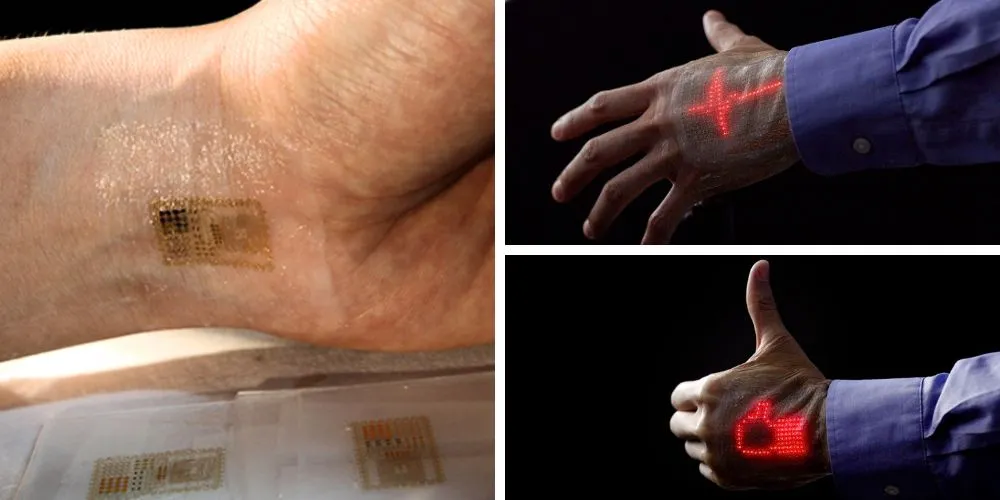Key Points
- E-skin is a flexible, stretchable material that mimics human skin and senses touch, temperature, and pressure.
- Embedded nanomaterials and conductive polymers into e-skin achieve high sensitivity and enable precise, real-time monitoring of various stimuli.
- Improvements in manufacturing make e-skin flexible, biocompatible, and durable, allowing seamless application on human skin for health monitoring and robotics.
- E-skin with AI can interpret sensory input, distinguishing between light and firm touches. This allows it to react intelligently and adapt responses.
In a groundbreaking development in wearable technology, electronic skin, or e-skin, is poised to revolutionize human-machine interaction and healthcare monitoring. E-skin, a thin, flexible, and stretchable electronic material, mimics the properties of human body skin, enabling it to sense touch, temperature, pressure, and even humidity.
Researchers and engineers have made significant strides in enhancing the capabilities of electronic skin, bringing it closer to practical applications in various fields. One of the key advancements lies in integrating advanced sensors and materials, such as nanomaterials and conductive polymers, into e-skin devices. The sensors can detect a wide range of stimuli with high sensitivity and accuracy, allowing for precise monitoring and feedback.
Moreover, improvements in manufacturing techniques have led to the development of e-skin that is flexible, durable, and biocompatible. This means that e-skin devices can conform to the contours of the human body, providing seamless integration for applications such as prosthetics, wearable health monitors, and human-machine interfaces.
One promising area of research is the integration of e-skin with artificial intelligence algorithms, enabling real-time data processing and analysis. This allows e-skin devices to detect sensory information and interpret and respond intelligently. For example, e-skin equipped with AI algorithms can differentiate between various types of touch, such as light taps or firm pressure, and adjust its response accordingly.
The potential applications of electronic skin are vast and varied. In healthcare, e-skin could revolutionize patient monitoring by providing continuous, non-invasive monitoring of vital signs, such as heart rate, blood pressure, and temperature. This could enable early detection of health problems and improve the management of chronic conditions.
In robotics and prosthetics, e-skin could enhance robotic systems’ dexterity and sensory capabilities, enabling more natural and intuitive interaction with humans. For amputees and individuals with disabilities, e-skin integrated into prosthetic limbs could restore a sense of touch and proprioception, improving mobility and quality of life.
As research in electronic skin continues to advance, we can expect to see increasingly sophisticated e-skin devices entering the market in the near future. These devices can potentially revolutionize healthcare, robotics, and human-computer interaction, guiding in a new era of sensory augmentation and personalized technology.





